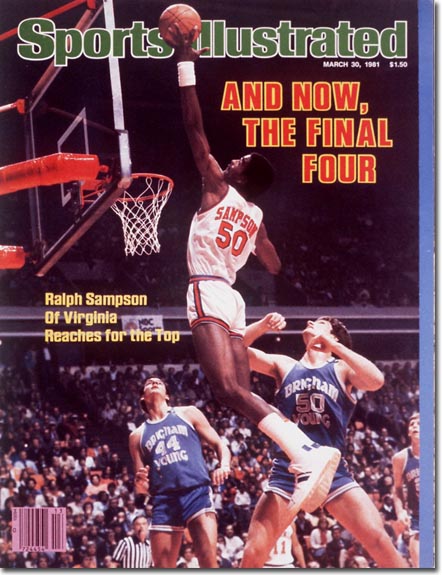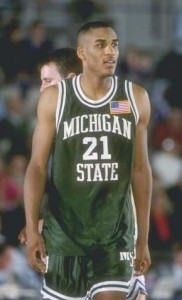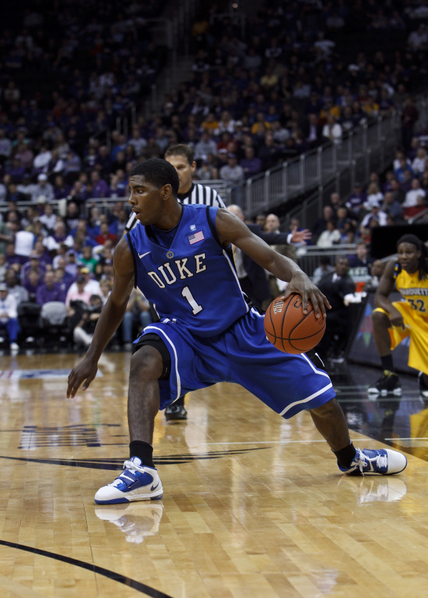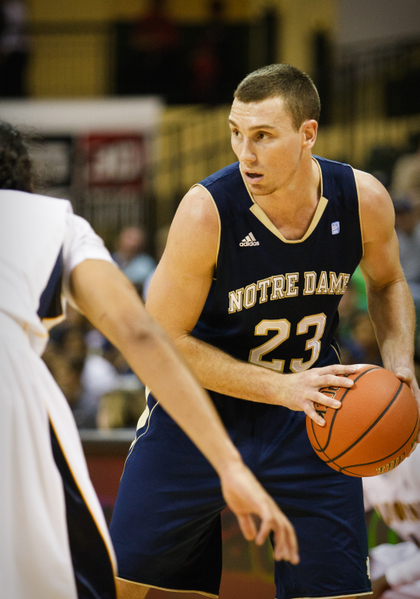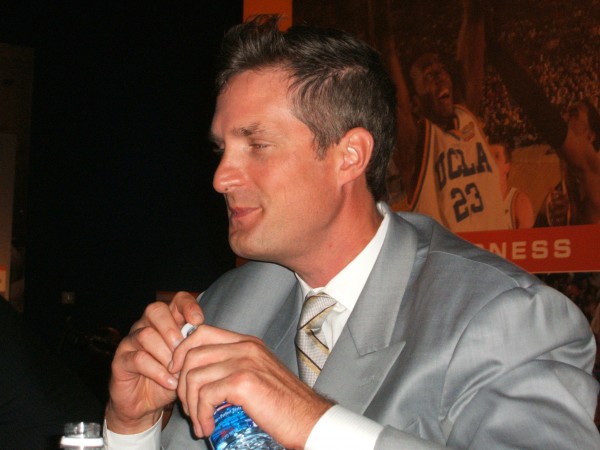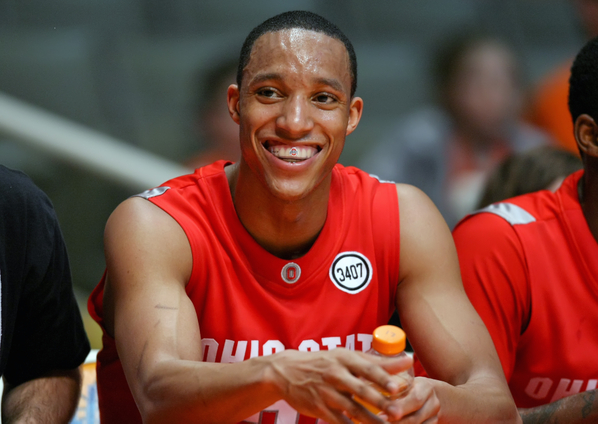Posted by JWeill on March 18th, 2011

Past Imperfect is a series focusing on the history of the game. Each week, RTC contributor JL Weill (@AgonicaBoss| Email) highlights some piece of historical arcana that may (or may not) be relevant to today’s college basketball landscape. This week: the lost, great 1998 NCAA tournament.
The 1998 NCAA tournament is the most exciting, bracket busting, nerve-wracking, well-played tournament in the modern era. And yet, no one seems to remember it. It’s sandwiched right there between “Simon says, ‘Championship,’” and Khalid El-Amin atop the scorer’s table. Can you see it? Look closely, it’s there. It’s the one with the two weird teams in the Final Four, the North Carolina squad coached by the old guy (no, not Dean Smith, the other old guy) and the first-year black coach at Kentucky. Oh, I know what will help…it’s the one where the coach’s kid hits that shot. Oh, now you remember.
It’s a shame, too, that no one remembers the 1998 tourney in toto. From beginning to end, the tournament was riveting, nip-and-tuck, gut-twisting basketball. And it didn’t take long at all to shake things up. On the first day, before many people were probably even aware that games were afoot, an out-of-the-way locale provided fans with some of the tournament’s most in-your-face moments, courtesy of a few names fans would become very familiar with over the next decade but who at the time were little known outside of the basketball community. But strange things can happen in Boise.
Ben Howland, then coach of the 15th-seeded Northern Arizona Lumberjacks, had his team on the cusp of history, all even at 62 apiece with Bob Huggins’ two-seed Cincinnati with just seconds remaining. Northern Arizona was the nation’s best three-point shooting team that year, so it was doubly cruel when Cincinnati’s D’Juan Baker buried an open three to win the game with just 3.6 seconds left to save the Bearcats’ skin. But Cincinnati’s flirtation with late-game disaster would come back to bite them the next round when, this time against West Virginia, Baker again hit a deep three-pointer to give his team the lead and then strutted down the court, only to watch helplessly as Mountaineers guard Jarrod West – yes, Jarrie West — threw up a prayer that was answered with eight tenths of a second left. West’s tipped three-pointer hit the backboard and went through the net, turning Baker’s sideline strut into a slumped-over disbelief. Live by the buzzer beater, die by the buzzer beater.
Meanwhile, in Sacramento, Tennessee fans got their first glimpse of a coach they’d become all too familiar with in a few years, when Kevin Stallings-coached Illinois State ruined the Volunteers’ sunny trip West on a running layup with 1.8 seconds left in overtime. While the Redbirds would get blasted in the second round, that was small consolation for Tennessee fans. Because just a season later, Stallings would take the job at intra-state rival Vanderbilt.

- Valparaiso guard Bryce Drew hit a classic buzzer beater in Round 1.
But the action wasn’t all left to the Left Coast. Back in D.C., President Bill Clinton wasn’t the only one issuing denials. Washington denied Xavier a spot in the second round on a Deon Luton game-winner, while three-seed South Carolina saw B.J. McKie’s last-gasp attempt fall short, keeping the Gamecocks on the outside looking in at upset king Richmond moving on. Oh, and for good measure, Indiana needed extra time to top Oklahoma as well. Had enough? Too bad. Because if Thursday seemed like enough excitement for any single round, things were just getting started.
All across the country, the tense moments and close games continued on Friday. In Lexington, a gruff Syracuse senior from Lithuania named Marius Janulis buried not one but two three-pointers to help the Orange squeak by Iona. Then Chicago turned into Boise, with Detroit Mercy upsetting St. John’s by two and Western Michigan sending Clemson packing by three. Meanwhile, in Atlanta, UCLA outlasted Miami (Fl.) on four straight free throws in the final seconds. And then, it happened.
It would be a shot for all time. It would be replayed so often it has become an indelible part of the very tournament itself. Like Christian Laettner’s turnaround jumper, like Jim Valvano running around looking for someone to hug, the miracle shot by Valparaiso guard, and son of his coach, Bryce Drew was the artistic flourish on a first round of gripping drama. Drew’s deep three, coming on a designed play whereby a half-court pass is touch passed to a streaking Drew, was the most memorable moment on a whole tournament’s worth of memorable moments.
Read the rest of this entry »
| past imperfect, Regular Features
| Tagged: andre miller, arizona, arthur lee, b.j. mckie, ben howland, bill clinton, bryce drew, charlotte, christian laettner, cincinnati, clemson, connecticut, cuttino mobley, d'juan baker, deon luton, detroit mercy, duke, florida state, hanno mottola, illinois state, iona, jarrod west, jeff sheppard, jim harrick, jim valvano, kansas, kentucky, kevin stallings, khalid el-amin, luther clay, marius janulis, mark madsen, miami (fl), michael doleac, michigan, miles simon, nazr mohammed, north carolina, northern arizona, oklahoma, rhode island, richard hamilton, richmond, rick pitino, scott padgett, south carolina, st johns, st louis, stanford, syracuse, tennessee, tropican field, tubby smith, tyson wheeler, ucla, utah, valparaiso, washington, wayne turner, west virginia, western michigan, xavier
Share this story






























